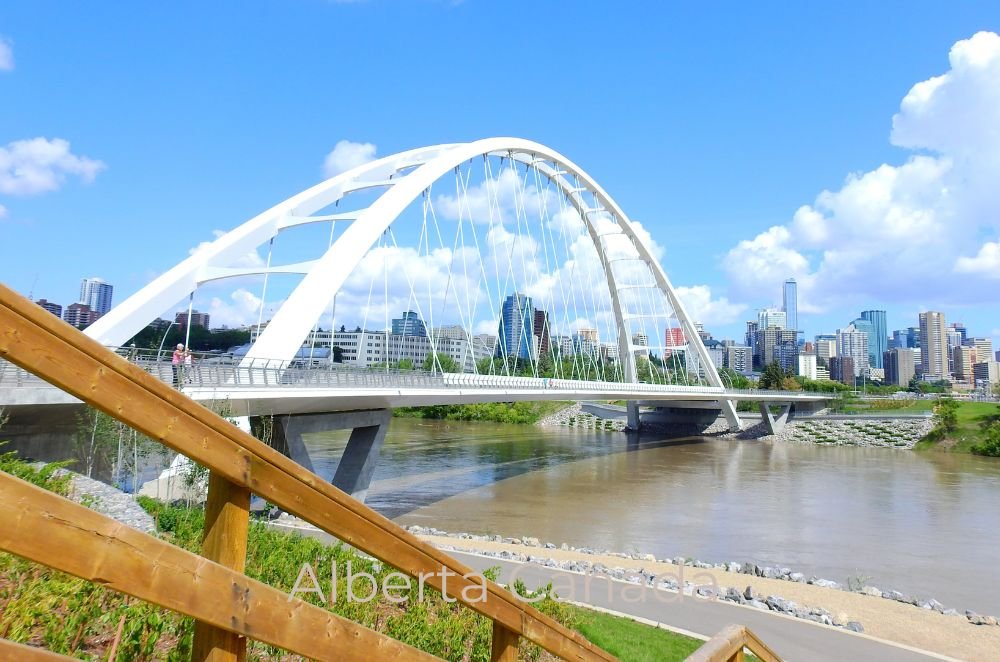Every time I make the drive from Edmonton to Calgary, I can’t resist taking a little detour west — because a trip to Banff National Park never gets old. The moment the Rocky Mountains start rising in the distance, I feel that familiar mix of peace and excitement. No matter how many times I visit, Banff always manages to take my breath away.
It’s a place where turquoise lakes shine under snow-capped peaks, elk wander through open meadows, and every bend in the road looks like a postcard.
Banff National Park is not only Canada’s oldest national park—established in 1885—but also one of the world’s most spectacular mountain destinations. Recognized as a UNESCO World Heritage Site, it covers 6,641 square kilometres of pure wilderness in the heart of the Canadian Rockies.
The park stretches from Lake Louise in the west to Banff Town in the east, offering endless outdoor adventures and some of the most beautiful views in Alberta. You can hike among wildflowers in summer, paddle across crystal-clear lakes, or return in winter to ski, skate, and soak in the hot springs while snow falls around you.
What makes Banff truly special is its perfect balance of untamed nature and small-town charm. You might spot elk, mountain goats, or even a grizzly bear while exploring the park, then end your day with a warm meal in one of Banff’s cozy mountain restaurants. For me, it’s more than just a travel destination — it’s a place that reminds you how wild and beautiful Canada really is. Every visit feels like coming home to the Rockies.
Where Is Banff National Park?
Banff National Park is tucked right into the heart of Alberta’s Rocky Mountains, about an hour and a half west of Calgary along the Trans-Canada Highway. It’s an easy and incredibly scenic drive that takes you straight into mountain country.
The park stretches over 6,600 square kilometres of rugged peaks, turquoise lakes, and thick pine forests. If you’re coming from Edmonton, it’s roughly a four-hour drive, making Banff one of the most accessible mountain getaways in the province.
The park’s main hub is Banff Town, a charming mountain community surrounded by breathtaking views in every direction. It’s filled with local restaurants, boutique shops, cozy hotels, and natural hot springs that visitors and locals both love. About 45 minutes up the highway is Lake Louise, home to the world-famous turquoise lake and the grand Fairmont Chateau. Banff Town and Lake Louise are the perfect starting points for exploring the park
Banff National Park’s key facts
| 📍 Area: | 6,641 km² of protected wilderness |
| 🌲 Elevation: | 1,400 – 3,600 metres |
| 🐻 Wildlife: | Bears, elk, mountain goats, bighorn sheep |
| ☀️ Best Time to Visit: | June to September for hiking and sightseeing |
| ❄️ Winter Activities: | December to March for skiing, skating, and snowshoeing |
How to Get to Banff National Park
Getting to Banff National Park is easy and incredibly scenic, no matter how you choose to travel. The park is located in the Canadian Rockies in southwestern Alberta, making it one of the most popular and accessible destinations in the province.
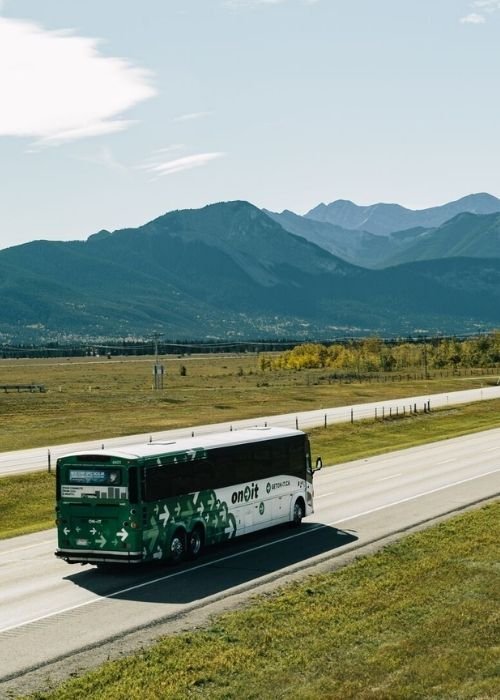
Where to Stay in Banff National Park
Finding the right place to stay in Banff National Park depends on your travel style and budget. The park offers everything from world-class mountain resorts to cozy cabins and scenic campgrounds. No matter how you like to travel, you’ll find a place that makes your visit comfortable and memorable. Booking in advance is highly recommended, especially during summer and ski season, as Banff is one of Alberta’s busiest destinations.
Staying in Banff Town
Banff Town is the most popular area to stay, offering the perfect mix of mountain views and modern comforts. It’s close to restaurants, shops, and many of the Banff National Park’s top attractions. For a touch of luxury, the iconic Fairmont Banff Springs Hotel—often called the “Castle in the Rockies”—offers elegant rooms, fine dining, and a world-class spa.
The Moose Hotel & Suites and Banff Aspen Lodge are great mid-range choices, known for their comfort and great locations.
Staying Near Lake Louise
About 45 minutes from Banff Town, Lake Louise offers a quieter and more scenic atmosphere. The famous Fairmont Chateau Lake Louise sits right beside the turquoise lake, providing breathtaking views from every window.
For something smaller and more rustic, Deer Lodge offers warm hospitality and easy access to nearby hiking trails. There are also a few hostels and inns nearby that are perfect for travellers who want to experience Lake Louise without the luxury price tag.
Camping & Cabins
If you love the outdoors, camping in Banff is an unforgettable experience. Popular campgrounds include Tunnel Mountain, Two Jack Lake, and Lake Louise Campground, all managed by Parks Canada.
These spots are surrounded by nature, yet still close to amenities and hiking trails. For a bit more comfort, Banff also offers cabins and glamping options—a great way to enjoy the wild beauty of the Rockies while still having a warm bed at night.
💡 Tip: You can find and compare accommodation options easily on Booking.com or Expedia. Reserve early to get the best rates, especially in July and August.
When Is the Best Time to Visit Banff?
Banff National Park is truly a year-round destination, offering an incredible array of experiences across all seasons.
Winter (December–February): Winter casts a magical spell over Banff, making it an exceptional time for snow enthusiasts. Whether skiing, snowshoeing, or attending the captivating “Ice Magic” winter festival, there’s no shortage of adventure here.
The snow-covered landscapes and frozen lakes transform the park into a winter wonderland, with the ski resorts boasting some of the best conditions in the world for your next winter retreat.
Spring (March–May): As the snow begins to melt, lush greenery and blooming wildflowers take center stage, setting the perfect backdrop for rejuvenation. Spring is an excellent time to visit for those who enjoy calmer atmospheres, fewer crowds, and the added benefit of more budget-friendly options. The season’s waterfalls are particularly spectacular, creating serene moments you’ll treasure.
Summer (June–August): The warmer months bring Banff to life, welcoming visitors with its long, sunny days perfect for hiking, canoeing, and exploring the scenic wilderness. From whitewater rafting adventures to horseback riding amidst breathtaking surroundings, summer is indeed peak season for a reason. However, with popularity comes crowds, so we recommend booking accommodations and activities well in advance to ensure a memorable stay.
Fall (September–November): Autumn paints Banff in vibrant shades of golden yellow and orange, thanks to the stunning larch trees. Photographers especially adore this season, and it’s also ideal for hiking and wildlife encounters. As the cooler weather sets in, the animals become more active, and the atmosphere turns tranquil with fewer visitors around.
Entry Fees and Park Pass Information
Types of Passes
To enter Banff National Park, visitors aged 18 and older are required to purchase a valid Parks Canada pass. There are several types available:
- Daily Pass: Adults pay $11.00, seniors (65+) pay $9.50, and youth 17 and under enter free. A family or group (up to 7 people in one vehicle) can enter for $22.00. These passes are valid until 4 p.m. the day after purchase.
- Discovery Pass (Annual): This pass offers unlimited access to over 80 Parks Canada places across the country, including Banff National Park. Prices are $75.25 for adults, $64.50 for seniors, and $151.25 for a family or group—making it perfect for visitors staying longer than a week or planning to explore multiple Canadian national parks.
Where to Buy Them
You can conveniently purchase park passes online through the official Parks Canada website prior to your arrival, which helps avoid long lines at the park gates. Passes are also available to buy in person at multiple locations, including Banff East Park Gate, Jasper East Park Gate, and the Lake Louise Visitor Centre. Buying ahead is highly recommended, especially during peak seasons.
Canada Parks Discovery Pass Details
The Discovery Pass grants unlimited admission to all national parks, historic sites, and marine conservation areas administered by Parks Canada for one year from the date of purchase. It is an excellent option for frequent visitors or those looking to explore beyond Banff, such as Yoho National Park and Jasper National Park within the Canadian Rockies.
This pass supports the maintenance and conservation of parks, enhancing visitor programs and facilities throughout Canada.
How to Get Around Banff
Driving and Parking Tips
Driving through Banff National Park is an excellent way to experience the majestic Canadian Rockies at your own pace. However, parking can be tricky during peak seasons. In downtown Banff, paid parking is enforced daily between 8 a.m. and 8 p.m., with some areas offering free parking options just outside the downtown core. One such convenient spot is the Train Station parking lot, where you can park for up to 9 hours at no cost.
Remember to observe all parking guidelines, including designated spots for residents and accessible parking stalls, and steer clear of no-parking zones near sidewalks, crosswalks, and fire hydrants. For a smoother experience, planning ahead and using real-time parking information tools is highly recommended to locate parking spots and minimize congestion.
Public Transit Options (Roam Transit, Shuttles)
Banff’s public transit system, Roam Transit, is a stress-free and environmentally friendly way to access popular attractions like Lake Louise, the Banff Gondola, Johnston Canyon, and Lake Minnewanka. During the summer, Roam also offers free shuttles for campers from locations such as Tunnel Mountain to downtown Banff, making it easier to navigate the area while reducing traffic buildup.
For sought-after destinations like Lake Louise and Moraine Lake, where personal vehicles have restricted access or high visitor demand, Parks Canada provides shuttle services that require advance reservations. These shuttles ensure a seamless experience—letting you skip the hassle of parking while contributing to environmental conservation in this pristine park.
Bike Rentals and Scenic Drives
Biking is a wonderful alternative to explore the enchanting landscapes of Banff National Park. There are several local companies offering bike rentals, making it simple to navigate the park’s extensive network of cycling routes and forest trails safely.
If driving is more your pace, then the scenic routes like the Bow Valley Parkway and the Icefields Parkway deliver incredible mountain vistas and opportunities to spot wildlife. However, it’s worth noting that vehicle restrictions are in place on certain roads, including Moraine Lake Road, to help protect the park’s natural beauty and ensure visitor safety.
Top Attractions and Things to Do in Banff
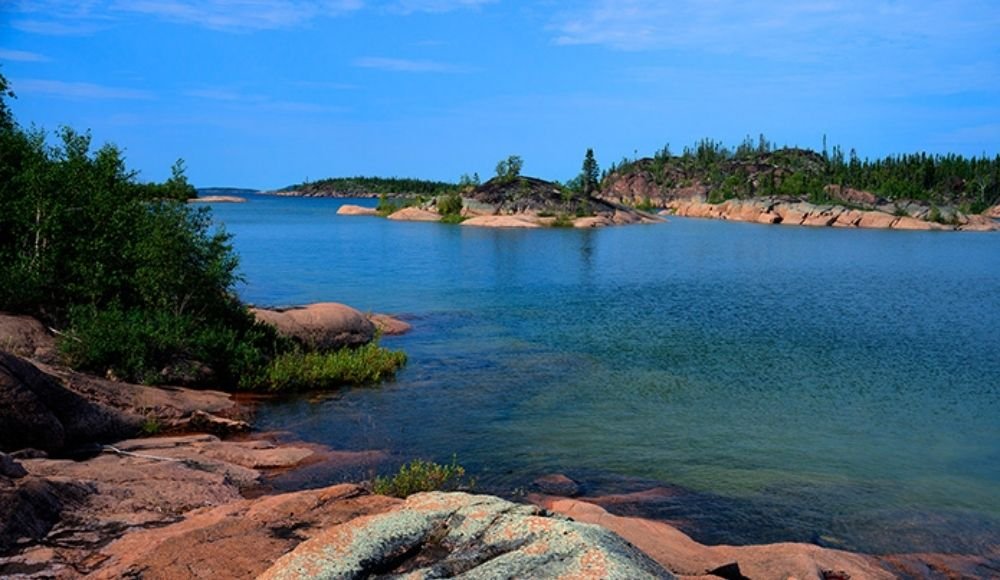
Iconic Lakes
Banff National Park boasts some of the most stunning lakes in Alberta, and we never tire of their beauty. Lake Louise is renowned for its striking turquoise waters and the grand presence of the Fairmont Banff Springs Hotel in the distance. It offers serene hiking trails and unforgettable canoeing experiences.
Moraine Lake on the other hand, is located in the Valley of the Ten Peaks. This lake captivates us every time with its bold blue waters and rugged peaks framing an idyllic scene. It is perfect for snapping photos. And as for Peyto Lake, its panoramic views from the Bow Summit lookout create an image so distinct it resembles the shape of a wolf’s head. It’s a memorable stop whenever we journey along scenic drives through the park.

Must-see landmarks
The delightful Banff Townsite sits at the heart of the park, combining the charm of nature with bustling shops, restaurants, and cultural sights. A visit to Bow Falls, just a short walk from Banff Avenue, provides a symphony of cascading waters set against a tranquil river backdrop.
For sweeping mountain views, the Banff Gondola delivers an unforgettable ascent to Sulphur Mountain. Up top, a scenic boardwalk leads to observation decks, and you can enjoy the rare treat of dining at a mountaintop restaurant with unmatched panoramic views of the Rockies.

Restaurants and Cafés
Banff’s dining scene showcases options that range from AAA Five Diamond fine dining to cozy, mountain-inspired cafés. For a quintessential Canadian steak experience, Bluebird Woodfired Steakhouse and the Maple Leaf remain local favourites, serving up high-quality dishes with top-notch service and craving Italian?
You can’t go wrong with Una Pizza + Wine, a beloved spot known for its authentic wood-fired pizzas, particularly the 4-maggi topped with truffle honey.
Those drawn to modern, farm-to-table cuisine will delight in Farm & Fire. And for an unmatched dining experience, the Sky Bistro is one of the best restaurants in Banff. It offers a Canadian-inspired menu atop Sulphur Mountain while enjoying the panoramic views of the Rockies.

Scenic Drives
The Icefields Parkway never fails to astonish us. This world-renowned route spans from Banff to Jasper National Park, showcasing glaciers, towering peaks, and remarkable valleys along the way. It is on top of the best road trips in Alberta.
Closer to Banff, the Bow Valley Parkway offers a more intimate journey that meanders along the Bow River. Here, frequent opportunities for wildlife sightings and stops at captivating landmarks like the Cave and Basin National Historic Site make every mile a delight.
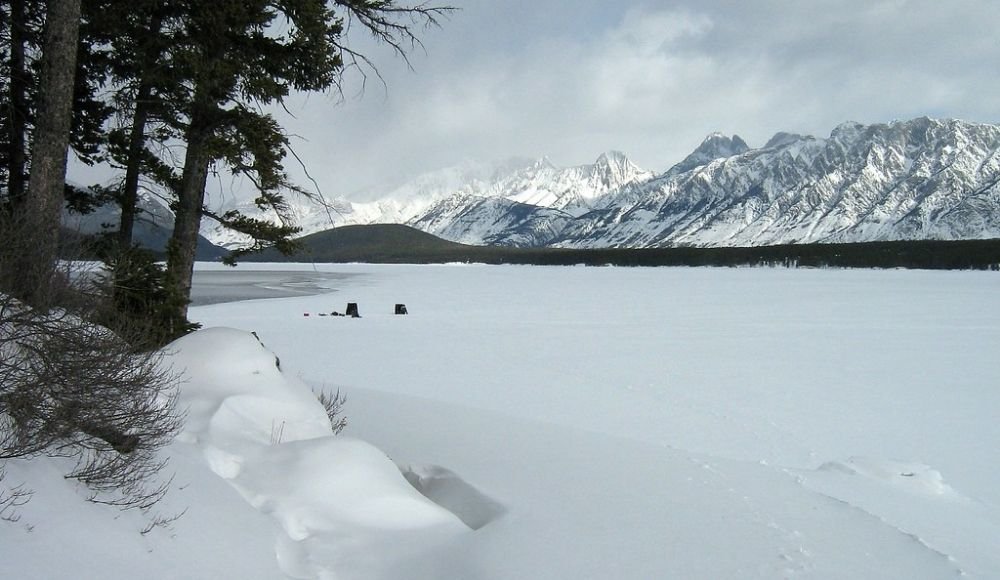
Winter Activities
Winter transforms Banff into a snowy playground, attracting visitors from around the globe. With world-class skiing available at renowned resorts like Sunshine Village and Lake Louise Ski Resort, it’s an experience that truly stands apart. Snowshoeing is another popular activity on many trails, offering a peaceful way to explore the white wilderness.
Locals and visitors alike relish the opportunity to skate on frozen lakes and prepared outdoor rinks. The icy landscapes combined with winter wildlife spotting opportunities make this season utterly magical.
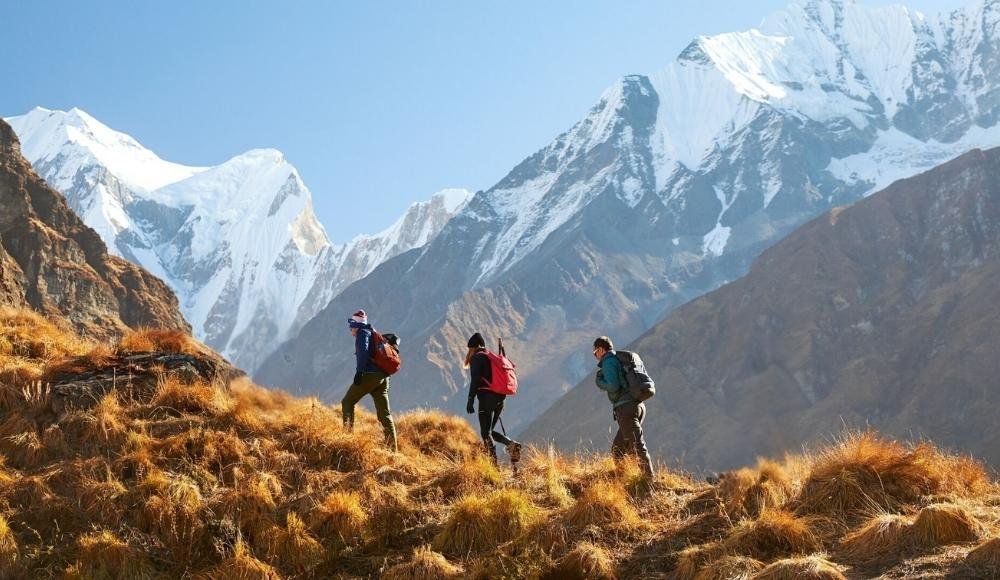
Hiking
Hiking in Banff is one of the easiest and most enjoyable ways to explore the Rocky Mountains.
The park has trails for all levels, so you can choose a short, simple walk or a longer adventure with big views. You’ll see clear blue lakes, tall mountains, waterfalls, and forests that feel peaceful and calm. It’s a good idea to start with marked trails and check the weather before you go.
Here are 5 popular hikes in Banff you can try:
Useful Travel Tips for First-Time Visitors

Essential Packing List for Banff
When visiting Banff National Park, packing layers is key to handling the variable mountain weather. Make sure to include a waterproof jacket, sturdy hiking boots, and warm clothing—even in summer. Don’t forget essentials like sunscreen, sunglasses, and a reusable water bottle to stay hydrated on your adventures.
If you’re planning to explore remote trails or campgrounds, ensure you bring a first aid kit, bear spray, and a map or GPS device. For those embracing the winter wonderland of Banff, items like insulated gloves, hats, and thermal layers are necessary to stay warm in snowy conditions.

Wildlife Safety and Etiquette
Banff is brimming with diverse wildlife, including bears and elk, making it important to maintain a safe distance at all times. Be sure to store food securely, stick to designated trails, and under no circumstances approach or feed animals.
It’s also important to keep dogs on a leash to ensure the safety of both pets and wildlife. We always observe quiet respect for the ecosystem and strictly follow the Parks Canada guidelines. By doing so, we can protect ourselves and the park’s stunning natural inhabitants.

How to Avoid Tourist Traps
To steer clear of crowded spots and tourist traps, visit popular attractions early in the morning or late in the afternoon during weekdays. Explore lesser-known trails and lakes such as Consolation Lakes or Sunshine Meadows to enjoy more tranquil settings.
Dine at local favourites rather than high-traffic restaurants in the town center for a more authentic experience, and consider booking tours or excursions through trusted local operators recommended by Parks Canada or the Banff Visitor Centre.
Planning ahead and seeking out off-the-beaten-path locations can lead to a peaceful and memorable adventure.

Cell Service and Wi-Fi Availability
To steer clear of crowded spots and tourist traps, visit popular attractions early in the morning or late in the afternoon during weekdays. Explore lesser-known trails and lakes such as Consolation Lakes or Sunshine Meadows to enjoy more tranquil settings.
Dine at local favourites rather than high-traffic restaurants in the town centre for a more authentic experience, and consider booking tours or excursions through trusted local operators recommended by Parks Canada or the Banff Visitor Centre.
Planning ahead and seeking out off-the-beaten-path locations can lead to a peaceful and memorable adventure.

Weather Changes and Safety Precautions
Mountain weather can change rapidly—from warm sunshine to sudden rain or snow—so always check current conditions before heading out. Carry waterproof gear and extra clothing to be prepared for any unexpected shifts in weather, and remember that trails may close due to wildlife activity or seasonal hazards.
Use caution on icy or slippery paths, especially in winter or early spring when the risk of accidents is higher.

Altitude Adjustment
At an elevation of around 1,400 meters (4,600 feet), Banff’s altitude might cause mild effects such as shortness of breath or fatigue for some visitors.
If you’re concerned, take it easy on your first day, focus on staying hydrated, and avoid jumping straight into strenuous activities. A gradual acclimatization will help you prevent altitude sickness and ensure you can fully savour the breathtaking beauty of the park.
Essential Packing List for Banff
When visiting Banff National Park, packing layers is key to handling the variable mountain weather. Make sure to include a waterproof jacket, sturdy hiking boots, and warm clothing—even in summer. Don’t forget essentials like sunscreen, sunglasses, and a reusable water bottle to stay hydrated on your adventures.
If you’re planning to explore remote trails or campgrounds, ensure you bring a first aid kit, bear spray, and a map or GPS device. For those embracing the winter wonderland of Banff, items like insulated gloves, hats, and thermal layers are necessary to stay warm in snowy conditions.
Wildlife Safety and Etiquette
Banff is brimming with diverse wildlife, including bears and elk, making it important to maintain a safe distance at all times. Be sure to store food securely, stick to designated trails, and under no circumstances approach or feed animals.
It’s also important to keep dogs on a leash to ensure the safety of both pets and wildlife. We always observe quiet respect for the ecosystem and strictly follow the Parks Canada guidelines. By doing so, we can protect ourselves and the park’s stunning natural inhabitants.
Altitude Adjustment
At an elevation of around 1,400 meters (4,600 feet), Banff’s altitude might cause mild effects such as shortness of breath or fatigue for some visitors.
If you’re concerned, take it easy on your first day, focus on staying hydrated, and avoid jumping straight into strenuous activities. A gradual acclimatization will help you prevent altitude sickness and ensure you can fully savour the breathtaking beauty of the park.
Cell Service and Wi-Fi Availability
To steer clear of crowded spots and tourist traps, visit popular attractions early in the morning or late in the afternoon during weekdays. Explore lesser-known trails and lakes such as Consolation Lakes or Sunshine Meadows to enjoy more tranquil settings.
Dine at local favourites rather than high-traffic restaurants in the town centre for a more authentic experience, and consider booking tours or excursions through trusted local operators recommended by Parks Canada or the Banff Visitor Centre.
Planning ahead and seeking out off-the-beaten-path locations can lead to a peaceful and memorable adventure.
Weather Changes and Safety Precautions
Mountain weather can change rapidly—from warm sunshine to sudden rain or snow—so always check current conditions before heading out. Carry waterproof gear and extra clothing to be prepared for any unexpected shifts in weather, and remember that trails may close due to wildlife activity or seasonal hazards.
Use caution on icy or slippery paths, especially in winter or early spring when the risk of accidents is higher.
How to Avoid Tourist Traps
To steer clear of crowded spots and tourist traps, visit popular attractions early in the morning or late in the afternoon during weekdays. Explore lesser-known trails and lakes such as Consolation Lakes or Sunshine Meadows to enjoy more tranquil settings.
Dine at local favourites rather than high-traffic restaurants in the town center for a more authentic experience, and consider booking tours or excursions through trusted local operators recommended by Parks Canada or the Banff Visitor Centre.
Planning ahead and seeking out off-the-beaten-path locations can lead to a peaceful and memorable adventure.
Day Trips and Nearby Attractions
Canmore
Just a short drive from Banff National Park, the charming town of Canmore is a fantastic destination for a day trip. Nestled at the edge of the Rockies, Canmore offers a laid-back atmosphere with quaint shops, cafés, and trails that are perfect for exploring.
One of the best ways to enjoy Canmore is by hiking scenic trails such as Grassi Lakes. Alternatively, taking the picturesque Smith Dorrien Road loop rewards you with breathtaking views of spots like Whiteman’s Pond and Spray Lakes.
Canmore also serves as the gateway to Kananaskis Country, where outdoor enthusiasts can delve into additional adventures such as hiking, wildlife viewing, and relaxing by peaceful lakeshores.
Yoho National Park
Located west of Banff in British Columbia, Yoho National Park is a pristine natural playground accessible via a short drive. Its dramatic waterfalls, including the famous Takakkaw Falls, unique geological formations like the Natural Bridge, and the radiant waters of Emerald Lake make Yoho an excellent choice for expanding your Rocky Mountain adventure.
Guided tours often combine the highlights of Banff and Yoho, making it convenient to explore both parks in the same day while savouring the beauty of these awe-inspiring landscapes.
Jasper via Icefields Parkway
The Icefields Parkway is undoubtedly one of the most scenic drives in the world, linking Banff to Jasper National Park via a stunning 290-kilometre stretch. Along the way, you’ll encounter incredible sights such as majestic glaciers, vibrant turquoise lakes, and an array of wildlife that defines the region’s natural charm.
A day trip to Jasper is ambitious but rewarding if undertaken early, offering the opportunity to experience breathtaking landmarks such as the Columbia Icefield, Athabasca Falls, and Maligne Lake.
For those seeking a more relaxed pace, consider transforming this journey into an overnight trip to truly immerse yourself in the grandeur of the Canadian Rockies.
Final Thought
Banff National Park is a spectacular destination, boasting breathtaking mountains, pristine lakes, and diverse wildlife that offer countless opportunities for exploration all year round. It remains one of those rare places where nature’s beauty consistently leaves us awestruck.
It’s essential to prepare thoughtfully for your trip by selecting the best time to visit, securing your park passes ahead of time, and organizing transportation and accommodations well in advance. Always respect the wildlife and stay ready for the park’s unpredictable weather conditions.
Whether your heart is set on discovering iconic lakes, winding through picturesque scenic drives, or embarking on thrilling outdoor adventures, Banff will undoubtedly deliver an unforgettable experience you’ll treasure forever. Start planning today and immerse yourself in the stunning beauty and excitement of this extraordinary Canadian paradise.
FAQs about Banff National Park
What is the best way to visit Banff?
The best way to visit Banff depends on your travel style, but most people enjoy the flexibility of driving. A car lets you explore lakes, trails, and lookouts at your own pace. If you prefer a stress-free trip, guided tours and shuttles are also great options.
How many days are required to visit Banff?
A good Banff trip takes at least 2 to 3 days. This gives you time to see the town, Lake Louise, and a few viewpoints. If you want to hike or explore more areas, plan for 4 to 5 days.
Can you do Banff without a car?
Yes, you can visit Banff without a car. Shuttles, Roam Transit buses, and guided tours can take you to major attractions like Lake Louise and Moraine Lake. Many visitors explore the park this way.
Can I enter Banff without a pass?
No, you need a Parks Canada pass to enter Banff National Park. You can buy a daily pass or a yearly Discovery Pass. Passes help support the park and must be displayed on your vehicle.
